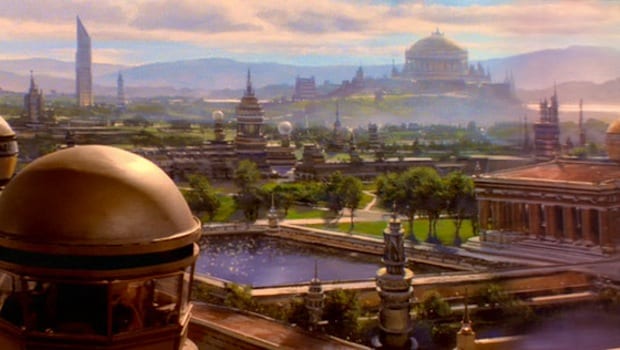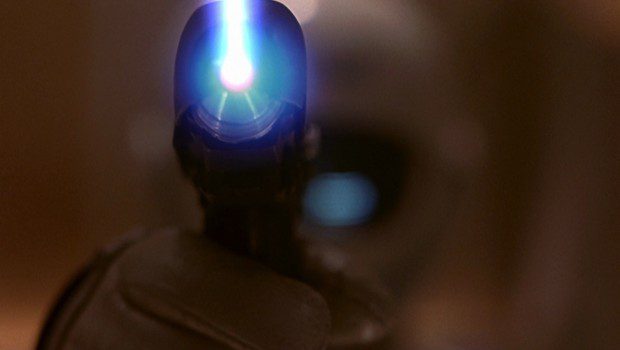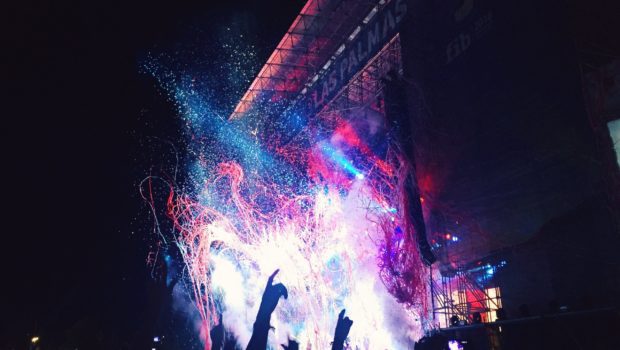
Bajor to host art from across the Federation
JALANDA CITY, BAJOR — The Federation Art & Cultural Council has selected Bajor to host an extensive collection of art and cultural works from worlds throughout the Federation.
Most historians agree that Bajoran civilization flourished as much as a hundred thousand years ago, with some claiming evidence of civilization as far back as half a million years. The Bajorans had been creating art and music thousands of years before most Federation species were even walking upright. Even today, the Bajoran people are renowned as artists and musicians. Many records of Bajor’s ancient history were lost during the fifty years of Cardassian occupation and have only been rediscovered in recent years.
The Jalanda Museum of Art was rebuilt ten years ago, along with the neighboring Jalanda Forum, a renowned music hall. Proponents had been petitioning for the rebuilding of the structures since the end of the Occupation, but it took many years for the resources to become available. Both the museum and forum have been rebuilt, the resulting complex named the Jalanda Cultural Institution. While their internal construction consist of the latest construction techniques and standards, the exteriors of the Institution buildings were designed to replicate the architecture and mortarless construction techniques of ancient Bajoran structures.
The centerpiece of the complex contains a full-size bantaca. Ancient Bajoran cities, such as B’hala, were built around them, denoting the city’s place in the cosmos. With the rediscovery of B’hala in 2373, archaeologists and architects have learned how the ancient Bajorans built the spires and their cities. The new Jalanda Cultural Institute’s bantaca follows the same mortarless construction technique, similarly marked with the city’s location in modern Bajoran script. Other cities plan on building their own bantacas in the future.
The museum already hosts some two million works from Bajor, from its earliest recorded history in the First Republic some 12,000 years ago to the newest works of today. Once the off-planet works arrive and are in place, the museum will be host to over 4.7 million works of art. Works will include art, sculptures, architectural models, and music, to name just a few categories. Some of the most anticipated works to be displayed are Earth’s The Last Supper and the restored Venus de Milo, Vulcan’s Raptor Over the Forge, and Cait’s The Hunt.
“We are excited at the prospect of hosting such an illustrious collection,” said Nirsum Isia, Bajor’s Minister of Culture. “Our people have suffered for decades and lost much of our history. We consider the Federation granting us this privilege to be a great honor.”
The exhaustive six-month nomination process covered everything from security concerns, nominee history, and location. Councilor Kyv Th’channik, chairperson of the Art & Cultural Council, spoke briefly about the decision.
“In the end, it came down to Bajor’s long and rich cultural and artistic history,” said Kyv. “Coupled with Bajor’s relatively new admission to the Federation, we felt this was an opportune time to spotlight the planet and its people.”
The exhibit is expected to open at the beginning of 2394 and will run for two Bajoran years.
- Bajor to host art from across the Federation - 239308.22
- Risa begins overhaul of weather control system - 239306.25


 Previous Article
Previous Article Next Article
Next Article Scandal as Matteo Barana leaves Trinity City Eagles
Scandal as Matteo Barana leaves Trinity City Eagles  A pox on all your houses! Klingon Empire presents Romeo & Juliet
A pox on all your houses! Klingon Empire presents Romeo & Juliet  Vulcan holonovelist Skilku wins premier prize for pushing the boundaries of the crime genre
Vulcan holonovelist Skilku wins premier prize for pushing the boundaries of the crime genre  Earth wins Fedevision Song Contest 2399
Earth wins Fedevision Song Contest 2399  Comic book hero returns: a look at the spectacular new Jamie Galactic holonovel
Comic book hero returns: a look at the spectacular new Jamie Galactic holonovel  Lomales: A Hitch in Federation-Laudean Relations?
Lomales: A Hitch in Federation-Laudean Relations?  Bake Off 2398: Risian Tarts Prove Popular With Station Residents
Bake Off 2398: Risian Tarts Prove Popular With Station Residents